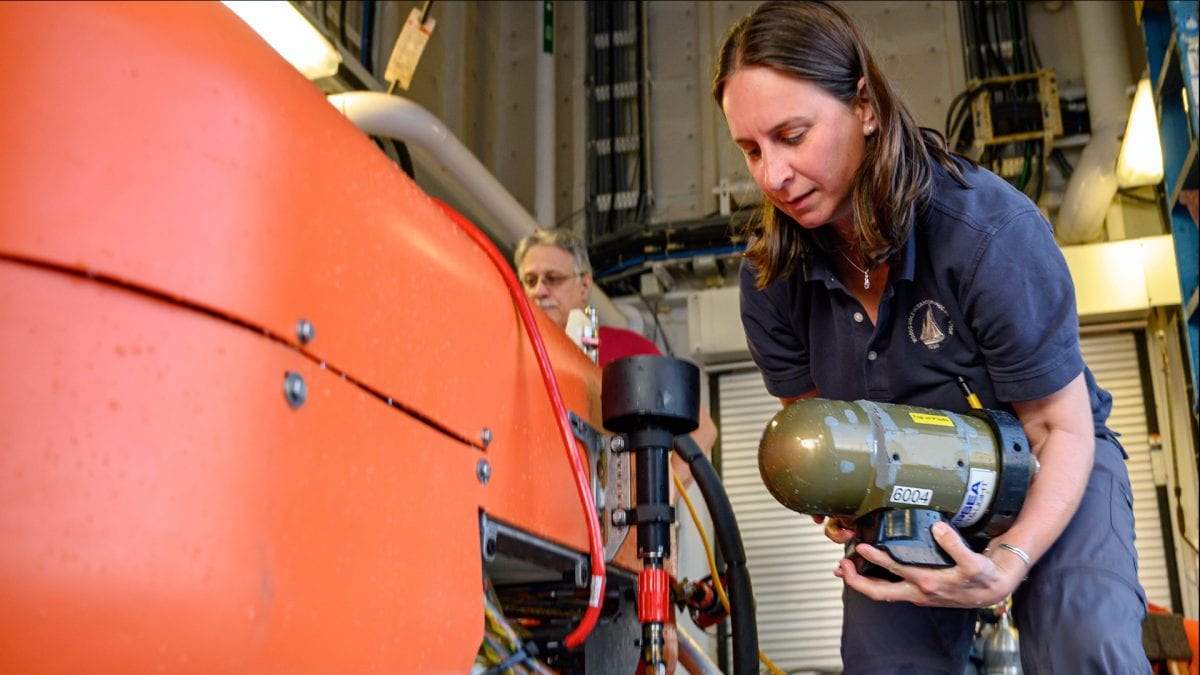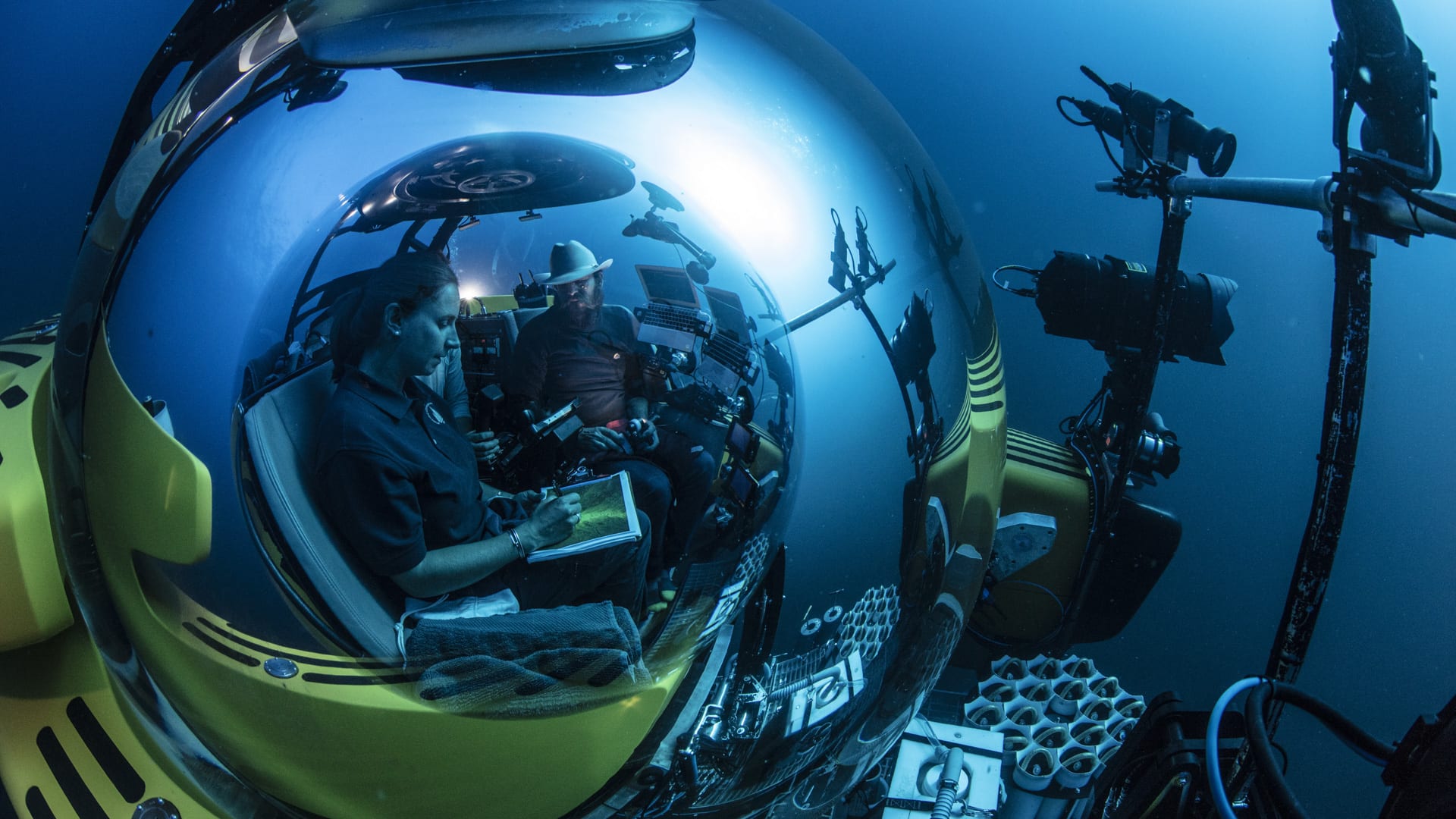Searching for the limits of life: Taylor Heyl
By Evan Lubofsky | October 23, 2019
Taylor Heyl is a deep-sea research scientist in the biology department at the Woods Hole Oceanographic Institution. She has been on over 20 oceanographic expeditions to the Atlantic and Pacific Oceans, Gulf of Alaska, Gulf of Mexico and Antarctica. She explores the extreme and unknown environments of the ocean’s hadal zone—the deepest region of the ocean extending down to 11,000 meters (36,000 feet)—to investigate the ecological processes associated with these habitats in the deep sea.
How did you become interested in ocean science?
As a child I always lived by the ocean, in Costa Rica, Haiti, and in many different locations along the coastal shoreline of New England. I always imagined myself an ocean explorer. I began by snorkeling off islands but continually found myself farther and farther from the surface, turning back from the deeper, darker waters when my eardrums could no longer stand the pressure. I became scuba certified at the Virgin Island Environmental Research Station (VIERS) on St. John, but was frustrated when limits were placed on the depths I could dive and the time I could spend at deeper depths. In college, while recovering hagfish traps in the Gulf of Maine for a senior thesis project, I became increasingly curious about what lay beyond the continental shelf, into the deepest depths of the ocean. From there, I knew my career would involve deep sea exploration and trying to understand the connection between animals and their extreme environments.
Why do you study the ocean?
Marine science has been the portal through which I have explored the world, both above and below the surface of the ocean. The curiosity and desire to find out what exists below the limits of human tolerance is something that inspires and drives me to investigate the deep sea. In graduate school I investigated the interaction between deep-sea clams and cold seep environments dominated by methane and sulfides; chemicals that are toxic to humans but a food source for animals in the deep. I am now interested in the effects of global climate change and shifting methane signals on biological communities at cold seeps in the Arctic.

Heyl mounts an underwater camera to Orpheus, WHOI’s newest vehicle for exploring the deepest parts of the ocean known as the hadal zone. (Photo by Evan Lubofsky, Woods Hole Oceanographic Institution)
Why WHOI?
When I was 9 years old, my father, then a Lieutenant-Commander in the Coast Guard, was bringing International Naval Officers from the Naval War College for an Informational Program visit to WHOI. He brought me along as an aspiring scientist. I listened to a presentation on seafloor mapping using mathematical models and saw others working in the deep sea with Alvin. That’s when I knew I wanted to explore and do research like that at WHOI.
What is the most surprising discovery you’ve made while here?
It was surprising to discover new hydrothermal vent sites during a research expedition to the Galapagos Rift in 2005. Using the ROV Jason, we imaged and characterized new biological communities and witnessed new seafloor being formed. Most recently, it has been exciting to be a part of the institution’s HADEX program, dedicated to investigating the hadal zone of the ocean which extends down to 36,000 feet at its deepest point. I have enjoyed being a part of the verification cruises to test our latest hadal autonomous underwater vehicle, Orpheus, and to realize that we are embarking on a new era of discoveries and understanding within the deepest parts of our ocean.

